Garden Guide: Drought-Tolerant Flowering Shrubs
Adding drought tolerant flowering shrubs to your landscape gives you an easy way to add beauty to your landscape.
The U.S. South and Southwest are used to sizzling summers, but as the world continues to set new heat records, even northern, coastal, midwestern, and New England regions are seeing more and more summer days topping 90 degrees.
That’s posing a threat to some traditional landscape shrubs that are native to colder regions and that don’t do well in heat. Heath, heather, yew, birds nest spruce, dwarf Alberta spruce, and enkianthus are examples of shrubs vulnerable to heat stress.
The late U.S. Department of Agriculture plant pathologist Dr. Marc Cathey, who developed the American Horticultural Society’s Heat Zone Map, found that 86 degrees is a key temperature waypoint for plants in the temperate world.
He said that a variety of setbacks begin to happen at that level, including a shutdown in chlorophyll production, leaf and flower-bud wilting, a drop in pollen viability, and subtle chemical changes in plant leaves that open them to increased bug attack.
Plants that evolved in hotter regions have found ways to cope with those troubles – even when temperatures soar into triple digits.
Horticulturists say that given the warming trend, gardeners are likely to be more successful when they choose landscape plants that are adapted to the coming conditions rather than ones that have done well in the past cooler temperatures.
When it comes to landscape shrubs, here are 10 that can take the heat and grow well in most of the U.S. All have USDA upper-end ratings at least into Zone 9.
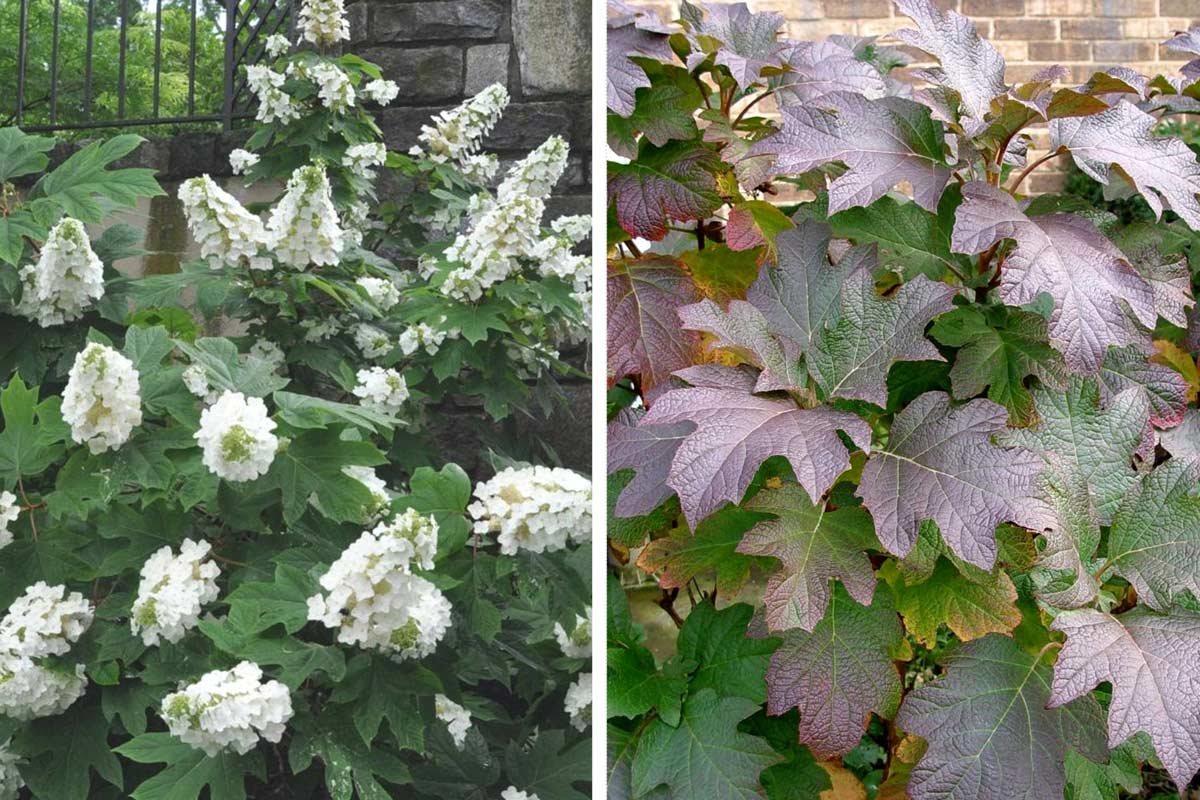
Oakleaf hydrangea has white cone-shaped flowers in summer, left, and burgundy fall foliage, right. Photos by George Weigel.
One of the heat-toughest hydrangeas, this native version produces cone-shaped white/pink flowers in summer, then showy burgundy fall foliage. Stems have peeling bark, and plants grow about six feet tall and wide.
Good varieties include Gatsby Pink® and Snow Queen® and the more compact ‘Ruby Slippers’ and ‘Munchkin.’
Oakleaf hydrangeas grow in full sun to part shade and are rated for Zones 5-9.
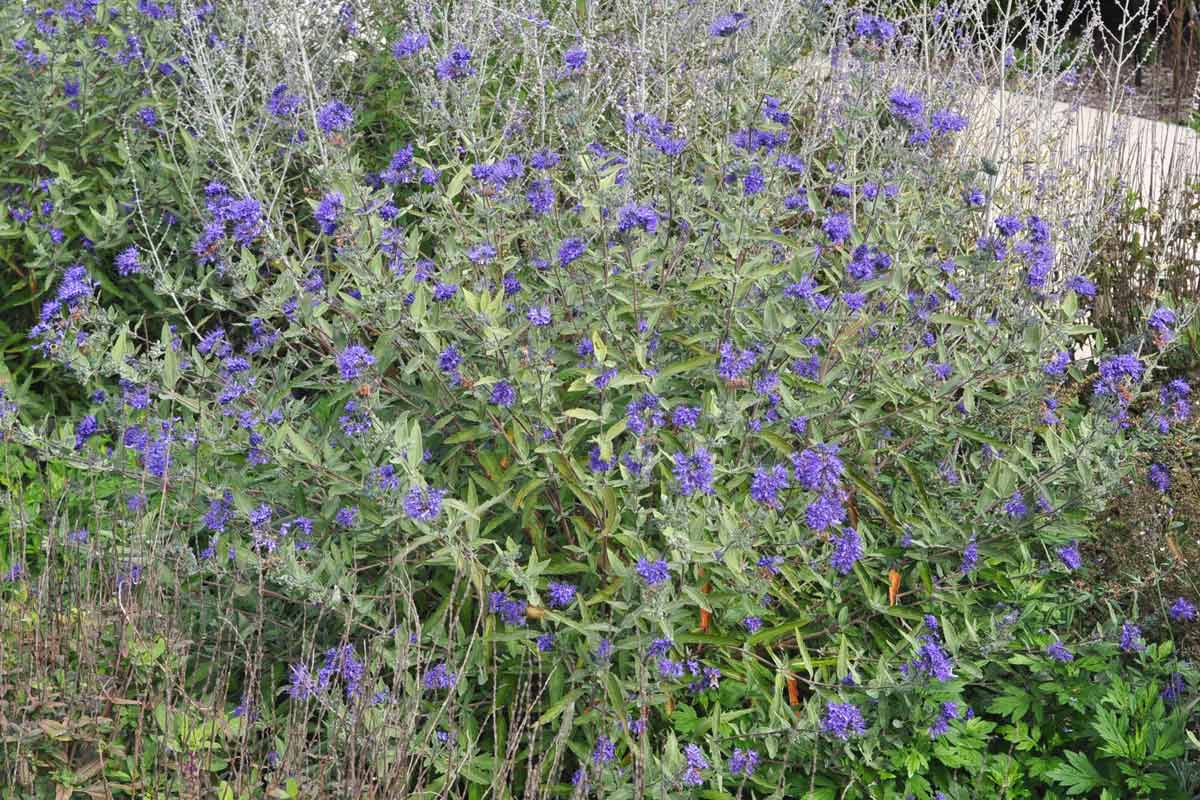
Bluebeard ‘Longwood Blue’ is shown blooming here in late summer. Photo by George Weigel.
Another native shrub, buttonbush produces marble-sized springtime flower balls with tubular white petals, then rounded fruits later in the season. It’s happy in damp soils and grows about four feet tall and five feet wide.
Sugar Shack® is a leading variety, but Magical Moonlight® is a newcomer with heavier bloom and more fruits.
Buttonbushes grow best in morning sun and afternoon shade and are rated for Zones 5-9.
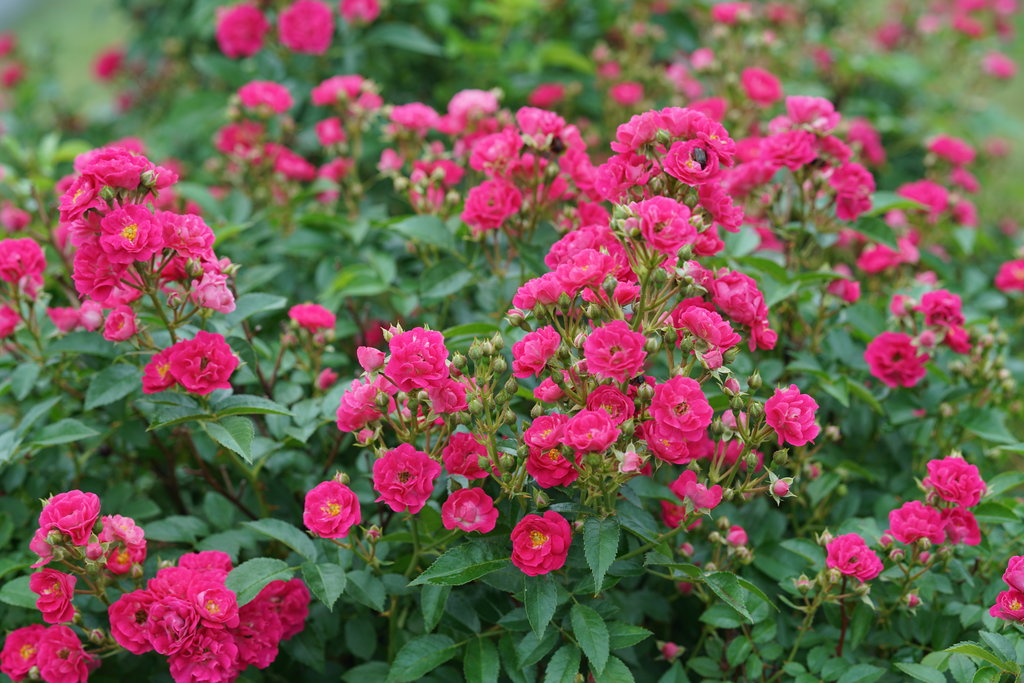
Oso Easy Peasy® Rose, photo courtesy Proven Winners®.
These are compact, bushy roses that are both longer-blooming and markedly more disease-resistant than traditional hybrid tea roses with their long, classic single-stem flowers.
Some shrub types bloom most of the summer in colors ranging from white to pink to bright red or yellow. Among the worthy series are Knock Out®, Drift®, Oso Easy®, True Bloom®, Easy Elegance®, and Kolorscape®.
All do well in full sun to light shade and are rated for Zones 4-9 (some down to Zone 3).
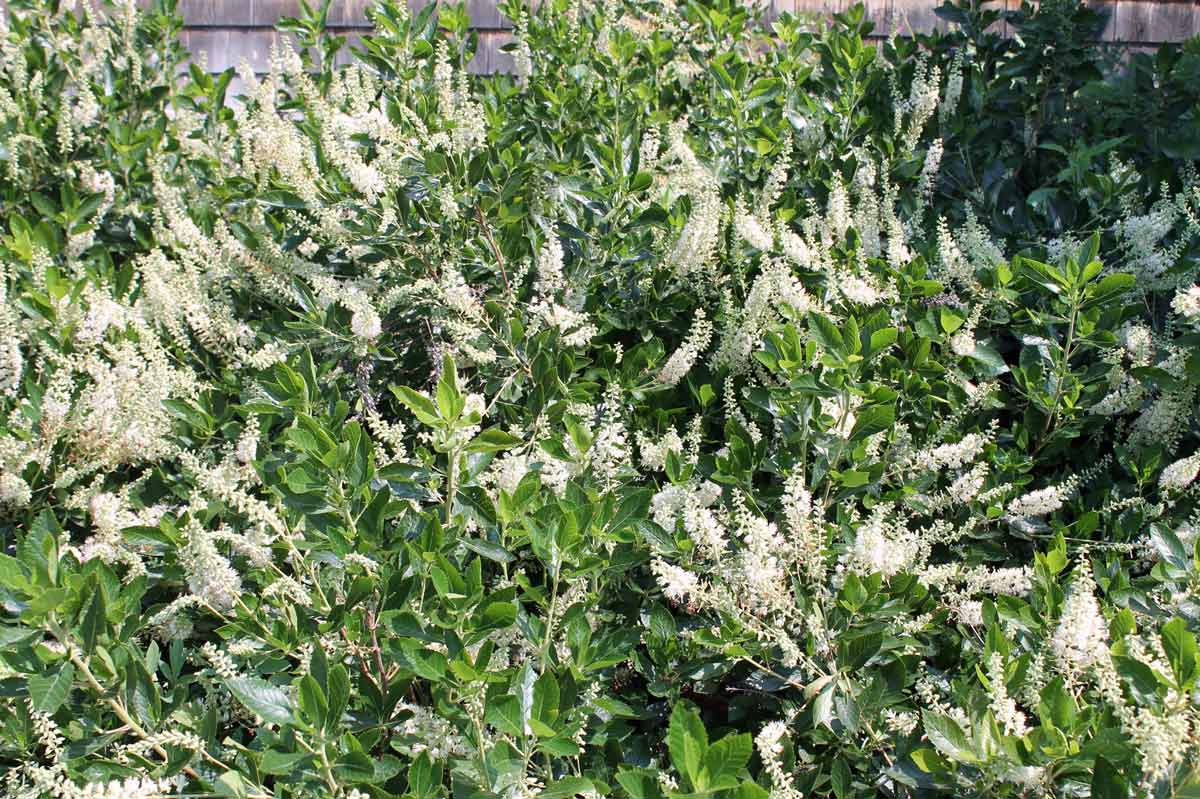
Clethra 'Sixteen Candles' is a white bloomer. Photo by George Weigel.
This native shrub produces bottle-brush flowers of white or pink in July, and its leaves turn golden-yellow in fall. Summersweet is a good pollinator attractor and tolerates damp soil, too.
‘Ruby Spice’ is a nice pink-flowering six-by-four-footer, while ‘Hummingbird,’ ‘Sixteen Candles,’ and ‘Compacta’ are more compact three-footers.
Summersweet grows in sun or half-day shade and is rated for Zones 3-9.
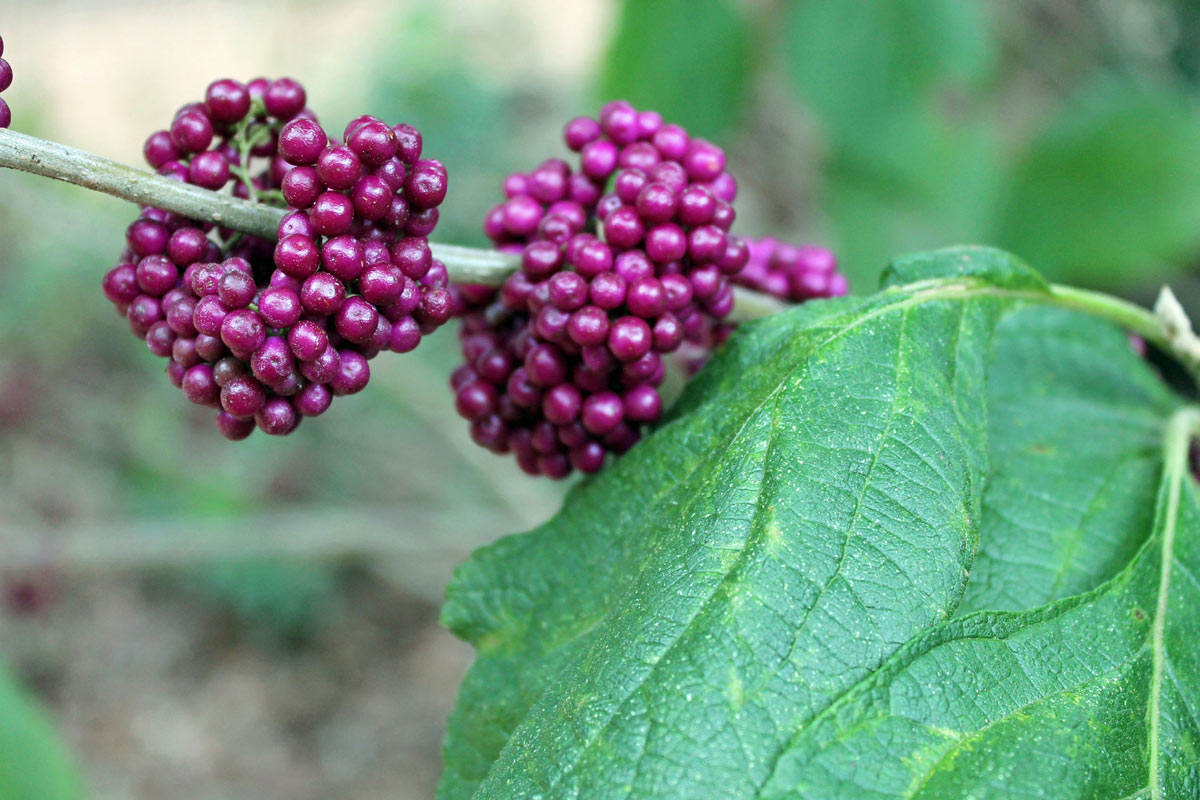
These are the purple fruits of American beautyberry. Photo by George Weigel.
The late-summer and fall BB-sized, metallic-violet berries are the main attraction of this arching native shrub that grows in the four- to six-foot range.
Also heat-tough are hybrids and varieties of Japanese beautyberries, such as ‘Profusion,’ ‘Early Amethyst,’ the white-variegated ‘Duet,’ and the dark-leafed Pearl Glam®.
Beautyberries grow in full sun to part shade and are rated for Zones 6-12.
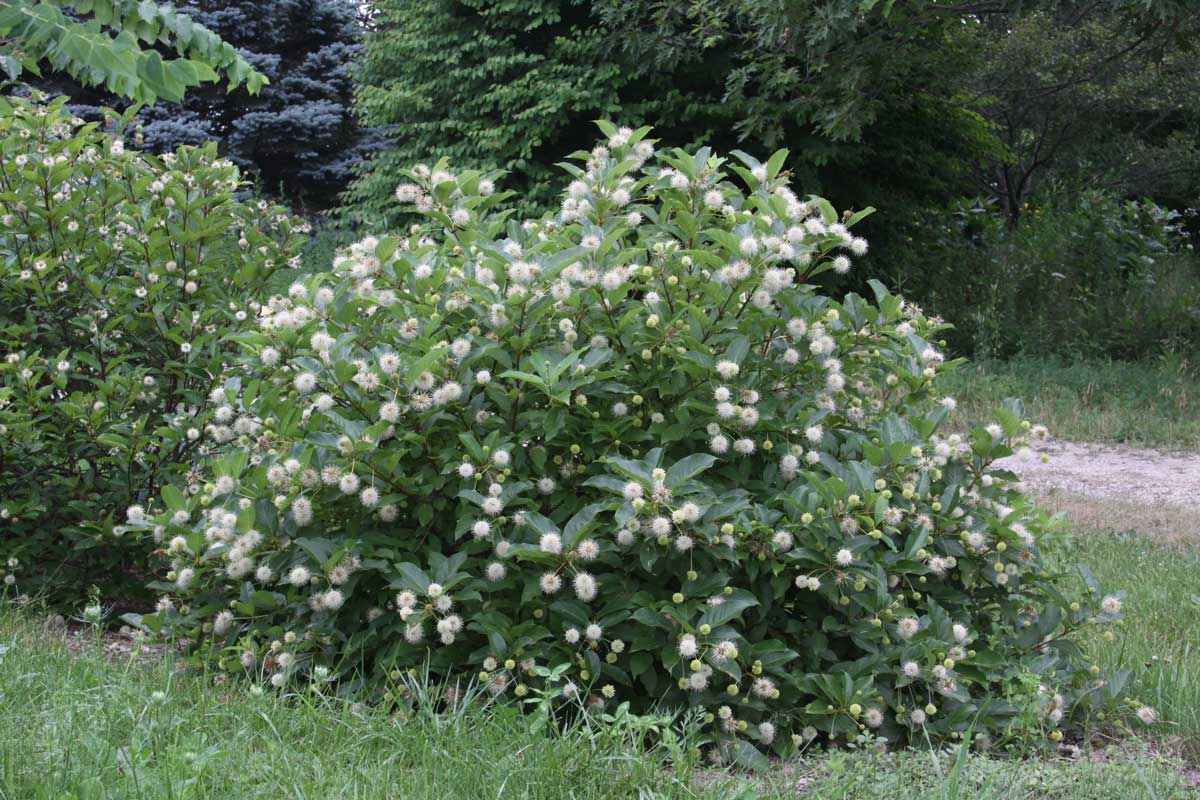
Buttonbush Magical® 'Moonlight'. Image courtesy Plants Nouveau.
Another native shrub, buttonbush produces marble-sized springtime flower balls with tubular white petals, then rounded fruits later in the season. It’s happy in damp soils and grows about four feet tall and five feet wide.
Sugar Shack® is a leading variety, but Magical Moonlight® is a newcomer with heavier bloom and more fruits.
Buttonbushes grow best in morning sun and afternoon shade and are rated for Zones 5-9.
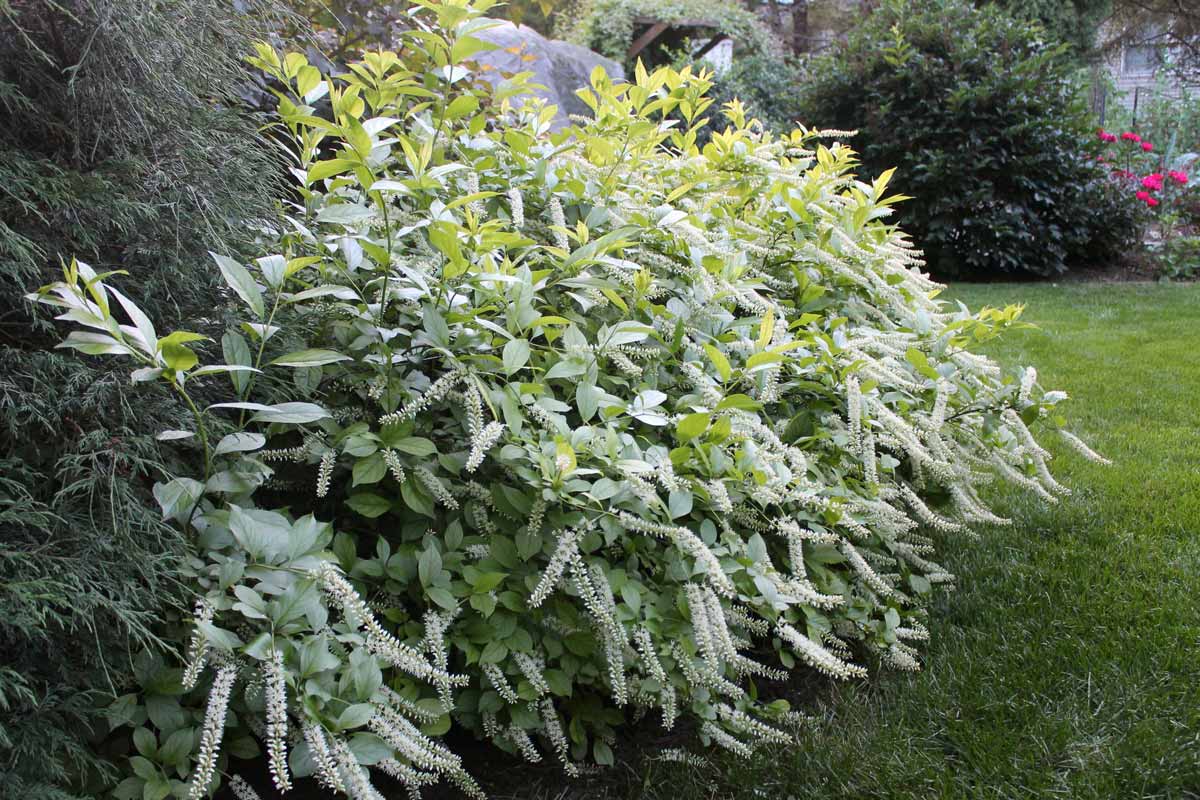
Little Henry® is a popular variety of Virginia sweetspire. Photo by George Weigel.
Yet another native shrub is this multi-season performer that produces arching white flower spikes in June and then brilliant red foliage in fall. Plants colonize to make a good choice for holding soil on a slope.
‘Henry’s Garnet’ is the traditional favorite at about four feet tall, while Little Henry®, Fizzy Mizzy®, and ‘Merlot’ are about a foot shorter.
Sweetspires grow in sun or part shade and are rated for Zones 5-9.
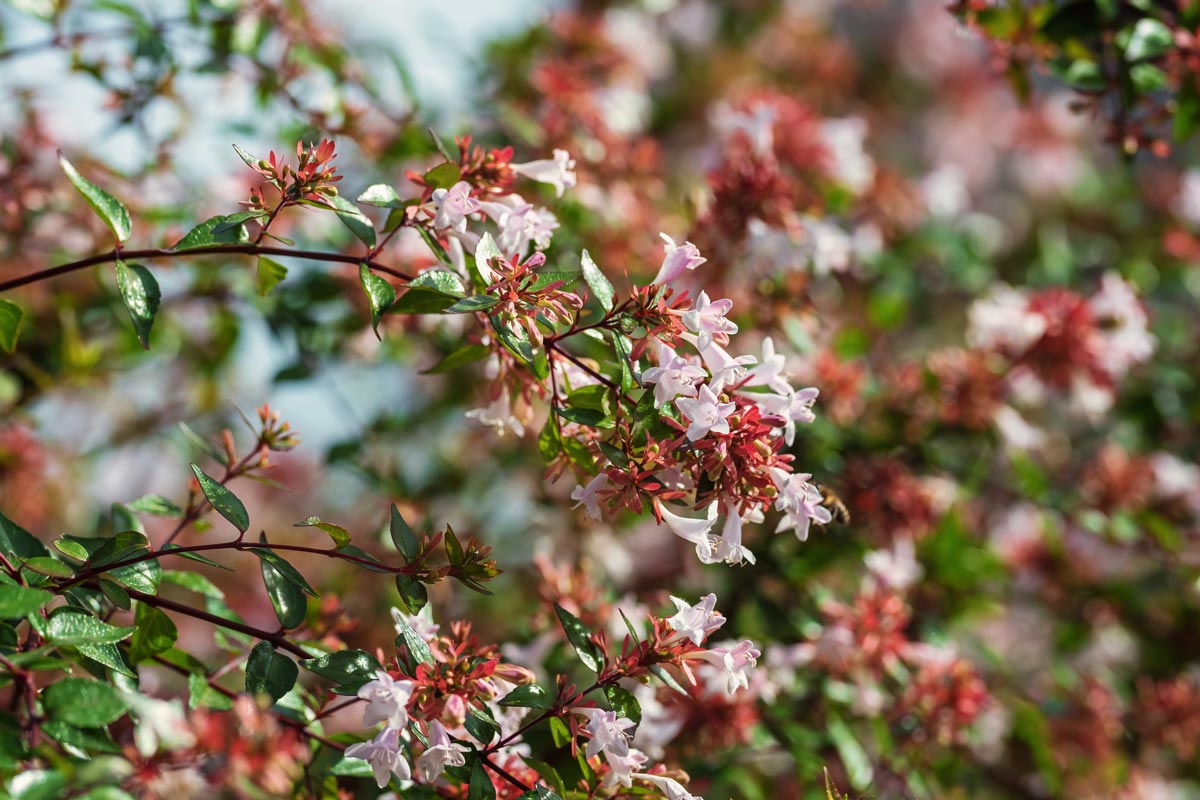
Abelia x grandiflora. delobol | iStock | Getty Images Plus
An old-fashioned staple, abelia is a small-leafed, semi-evergreen shrub with white or pink tubular flowers.
Four good compact varieties that grow about three feet tall and four feet wide are the pink-blooming ‘Rose Creek’ and Pinky Bells®, the white-blooming ‘Little Richard,’ and the white-blooming, gold-variegated ‘Kaleidoscope.’
Abelias grow in full sun to part shade and are rated for USDA Zones 5-9.
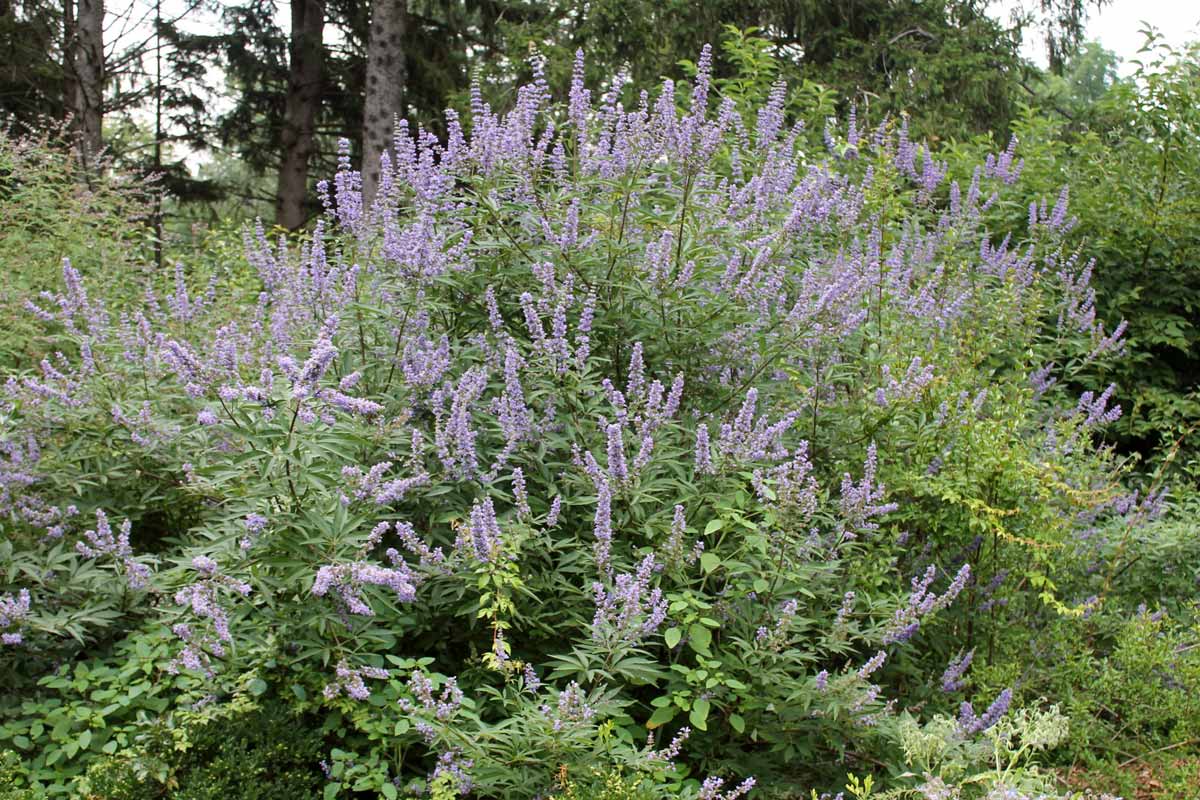
Chastetrees look a lot like butterfly bushes. Photo by George Weigel.
Now that most butterfly bushes are being discouraged because of potentially invasive seeding into the wild, chastetrees are an alternative that have similar late-summer, pyramidal flowers, usually in lavender or blue-purple. Plants grow about six feet tall and slightly wider.
Two good varieties that bloom bluish-lavender are ‘Shoal Creek’ and Queen Bee®.
Chastetrees grow in sun or part shade and are rated for Zones 6-9.
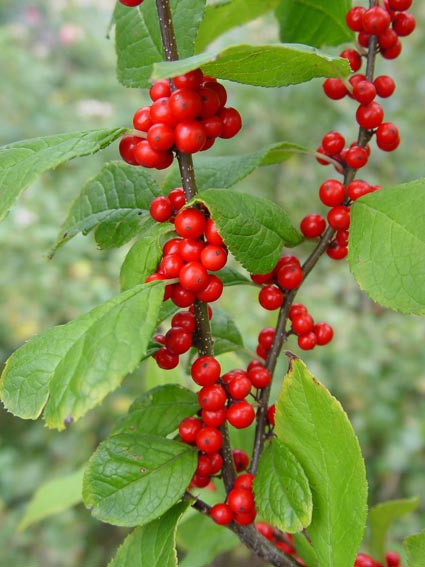
Winterberry holly with bright red berries in fall. photos by George Weigel
Winterberry hollies are leaf-dropping upright shrubs whose females produce pea-sized bright-red or golden berries in fall and winter when pollinated by a suitable male.
Some of the best females are ‘Scarlett O’Hara,’ ‘Winter Red,’ and Berry Nice® (eight- to 10-footers) and the more compact Red Sprite® and Berry Poppins® (four to six feet).
Winterberries grow in sun or part shade (including damp sites) and are rated for Zones 3-9.